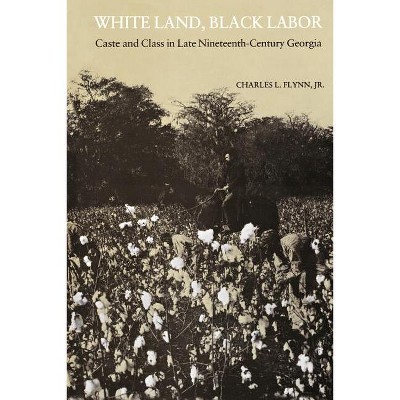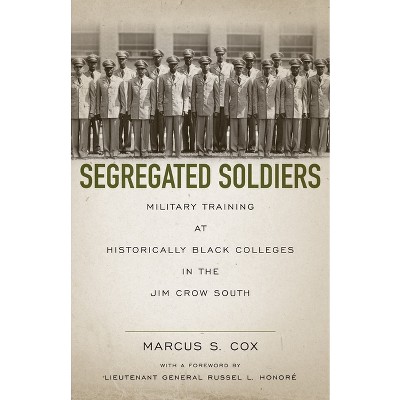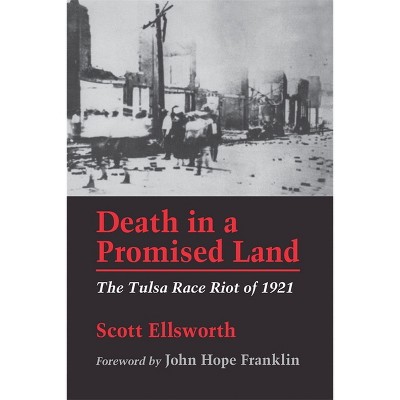About this item
Highlights
- In Land of Milk and Money, Alan I Marcus examines the establishment of the dairy industry in the United States South during the 1920s.
- About the Author: Alan I Marcus is the William L. Giles Distinguished Professor of History at Mississippi State University and the coauthor of Technology in America: A Brief History.
- 330 Pages
- History, United States
Description
About the Book
"In Land of Milk and Money, Alan Marcus examines the dairy industry's creation in the United States South in the 1920s. He suggests that the rise of the modern dairy business resulted from debates, experiences, and redefinitions that occurred both in the northern industrial sector and in small southern towns. Marcus looks specifically at the internal history and corporate policies of the Borden Company--the world's largest dairy firm--and the internal history of small-town commercial organizations that sought to lure the company to the South. He suggests that Borden implemented a whole series of corporate policies and techniques in its southern plants that came to characterize modern American industry generally and that it did so nearly five years before General Motors, which historians often give credit for fomenting that transition. Marcus focuses on Starkville, Mississippi, the location of Borden's first southern milk condenser, as the seminal touchstone for a public relations campaign that led towns throughout the South to establish milk plants in or near their town limits. He shows how town leaders and Borden conducted the campaign and what the results were in Mississippi, Tennessee, Alabama, Louisiana, and Texas. In these locations, the dairy industry's arrival led many of the region's farmers to diversify their output by adding dairy. Most did so, he suggests, only after a campaign by agricultural diversification reformers convinced them of the profits possible. He also shows how Black sharecroppers, tenant farmers, and dairymen played a role in creating the southern dairy trade. Land of Milk and Money focuses on small southern towns rather than the impact of scientists and the federal government, two groups that had been pushing dairying in the South for nearly four decades with little to no success and who were only tangentially involved in the creation of a southern dairy industry. At the time, many small towns in rural America were on the verge of extinction, which proved a potent force for action to attract an array of industries. While the histories of those other industries are well known, Marcus's study is the first comprehensive examination of the wildly successful southern dairy business. One byproduct of that success was that small towns secured a measure of independence and stability that allowed them to undertake the various modernization projects their citizens demanded"--Book Synopsis
In Land of Milk and Money, Alan I Marcus examines the establishment of the dairy industry in the United States South during the 1920s. Looking specifically at the internal history of the Borden Company--the world's largest dairy firm--as well as small-town efforts to lure industry and manufacturing south, Marcus suggests that the rise of the modern dairy business resulted from debates and redefinitions that occurred in both the northern industrial sector and southern towns. Condensed milk production in Starkville, Mississippi, the location of Borden's and the South's first condensery, so exceeded expectations that it emerged as a touchstone for success. Starkville's vigorous self-promotion acted as a public relations campaign that inspired towns in Tennessee, Alabama, Louisiana, and Texas to entice northern milk concerns looking to relocate. Local officials throughout the South urged farmers, including Black sharecroppers and tenants, to add dairying to their operations to make their locales more attractive to northern interests. Many did so only after small-town commercial elites convinced them of dairying's potential profitability.
Land of Milk and Money focuses on small-town businessmen rather than scientists and the federal government, two groups that pushed for agricultural diversification in the South for nearly four decades with little to no success. As many towns in rural America faced extinction due to migration, northern manufacturers' creation of regional facilities proved a potent means to boost profits and remain relevant during uncertain economic times. While scholars have long emphasized northern efforts to decentralize production during this period, Marcus's study examines the ramifications of those efforts for the South through the singular success of the southern dairy business. The presence of local dairying operations afforded small towns a measure of independence and stability, allowing them to diversify their economies and better weather the economic turmoil of the Great Depression.Review Quotes
"Our understanding of the modern South continues to become more nuanced through studies such as Mar-cus's that provide new perspectives on southern agricultural diversifi-cation and its connection to industrial devel-opment. . . . Land of Milk and Money is more than a his-tory of Starkville, Mississippi. Marcus connects Starkville's success story to the rest of the state and the South as a whole."--Journal of American History
About the Author
Alan I Marcus is the William L. Giles Distinguished Professor of History at Mississippi State University and the coauthor of Technology in America: A Brief History.











